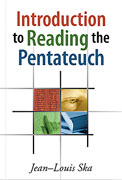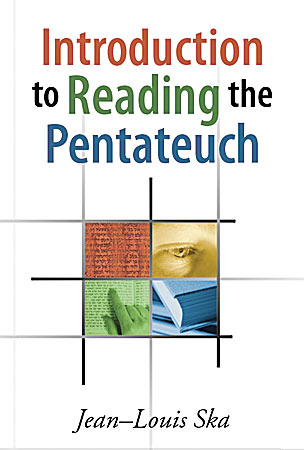Introduction to Reading the Pentateuch
Jean-Louis Ska
When Jean Louis Ska’s Introduzione alla lettura del Pentateuco was first published in Italy, it was quickly hailed as the most attractive and usable introduction to the Pentateuch to appear in modern times. Because of its strengths, it was soon translated into French. The English translation published by Eisenbrauns has been completely reviewed and updated (including the bibliography) by Ska. Among the book’s many strengths are its close attention to the ways in which modern cultural history has affected Pentateuchal interpretation, attention to providing the kinds of examples that are helpful to students, presentation of a good balance between the history of interpretation and the data of the text, and the clarity of Ska’s writing. For both students and scholars, many consider this book the best contemporary introduction to the Pentateuch.
- Description
- Table of Contents
1. Basic Questions about the Pentateuch
A. The Origin of the Word Pentateuch and Its Usage
B. Tetrateuch, Pentateuch, Hexateuch, or Enneateuch?
C. Moses, the Pentateuch, and the Canon of the Hebrew Bible
2. The Five Books of the Pentateuch: Content and Structure
A. The Division into Five Books
B. The Structure of the Book of Genesis
C. The Structure of the Book of Exodus
D. The Structure of the Book of Leviticus
E. The Structure of the Book of Numbers
F. The Structure of the Book of Deuteronomy
3. Literary Problems of the Pentateuch I: The Legislative Texts
A. The Laws with Regard to Slaves
B. The Laws regarding Loans: Exod 22:24, Deut 23:20–21, Lev 25:35–36
C. The Laws concerning the Enemy’s Donkey or the Love of One’s Enemies: Exod 23:4–5, Deut 22:1–4, Lev 19:17–18
D. The Decalogue
4. Literary Problems of the Pentateuch II: The Narrative Texts
A. Different Versions of the Same Event
B. Doublets within a Single Narrative
5. Literary Problems of the Pentateuch III: Some Redactional Interventions
A. Two Examples of Redactional “Insertions”
B. The “Resumptive Repetition”
C. Some “Linguistic Markers” of Redactional Work
D. Important “Divine Discourses” of Redactional Origin
E. Moses’ Intercessions: Exod 32:7–14, Num 14:11b–23a
F. Conclusion
6. Exegesis of the Pentateuch: A History of Research from Ancient Times to 1970
A. Antiquity and the Middle Ages
B. Humanism and the Beginning of Modern Exegesis
C. The Classic Documentary Hypothesis
D. Gunkel, Noth, von Rad, and Form Criticism
E. Other Schools of Research
7. Recent Developments in the Study of the Pentateuch
A. Criticisms of the Documentary Hypothesis
B. The Problem of the Various Sources
C. The “Synchronic” Study of the Pentateuch
8. Basic Characteristics of Ancient Literature
A. The Law of Antiquity or Precedence
B. The Law of Conservation: Nothing Is Eliminated
C. The Law of Continuity and Updating
D. The Law of Economy: Only What Is Necessary Should Be Written
E. Extrabiblical Parallels
9. Reference Points for Reading the Pentateuch
A. The Pentateuch and the Reconstruction of Israel after the Exile
B. Anchor Points for Interpretation: Three Codes Three Theologies, and the Final Redaction
C. Did a Preexilic Source on Israel’s Origins Exist?
D. The Preexilic Materials of the Pentateuch
10. The Pentateuch and Postexilic Israel
A. Persian Imperial Authorization
B. The Theory of Citizens Connected with the Temple (Bürger-Tempel-Gemeinde)
Conclusion
Postscript
Bibliography
Indexes
Index of Authors
Index of Scripture
Mailing List
Subscribe to our mailing list and be notified about new titles, journals and catalogs.




